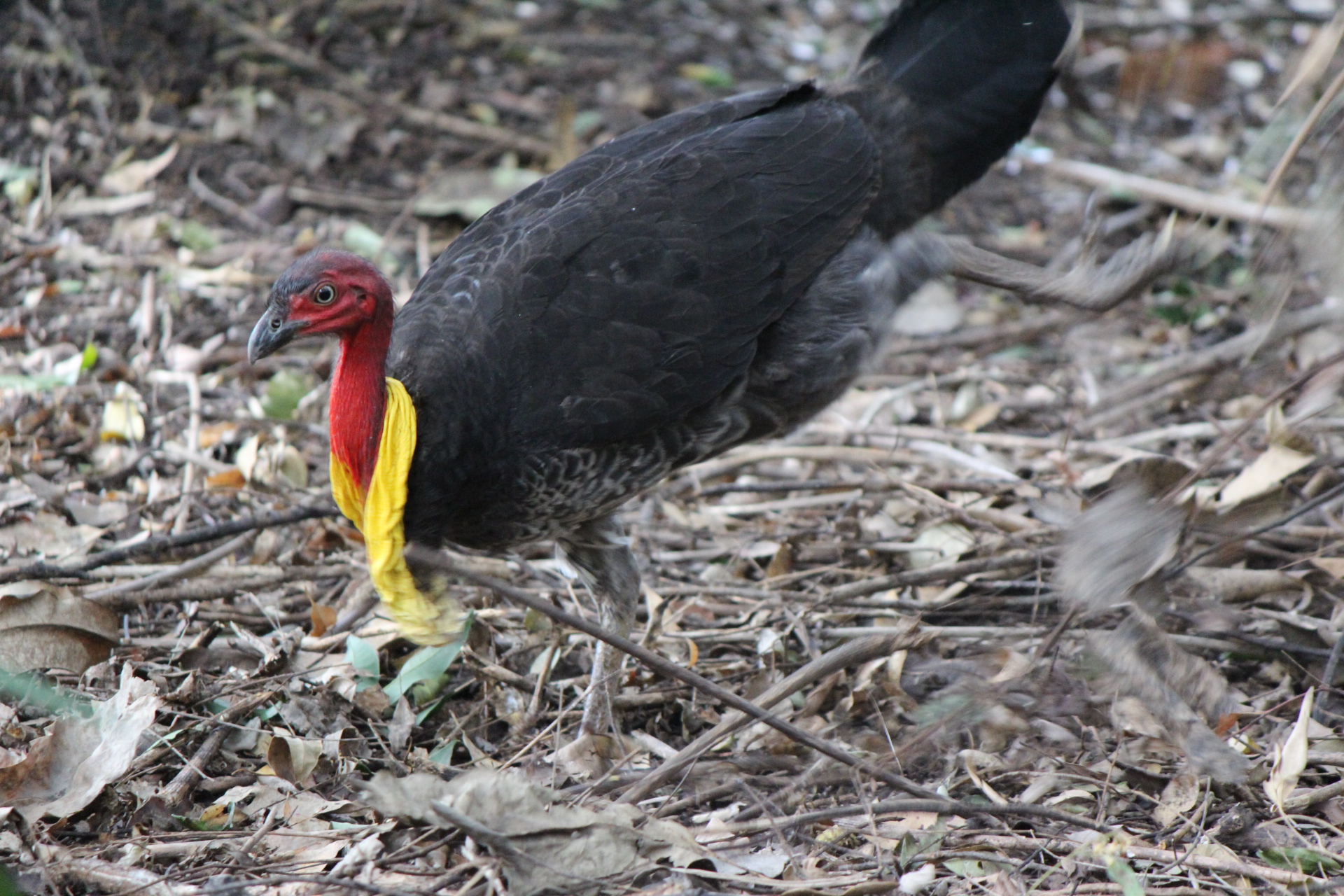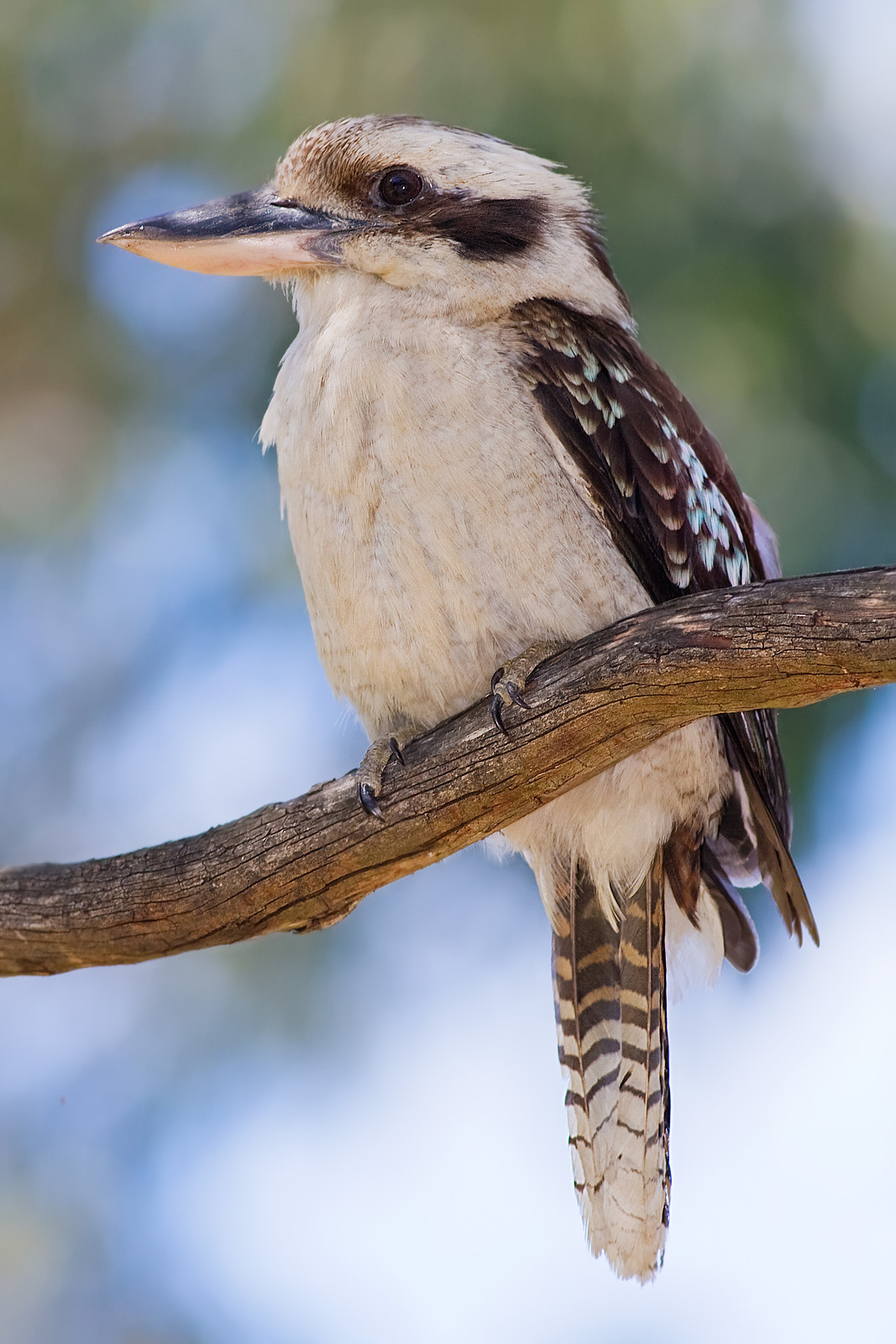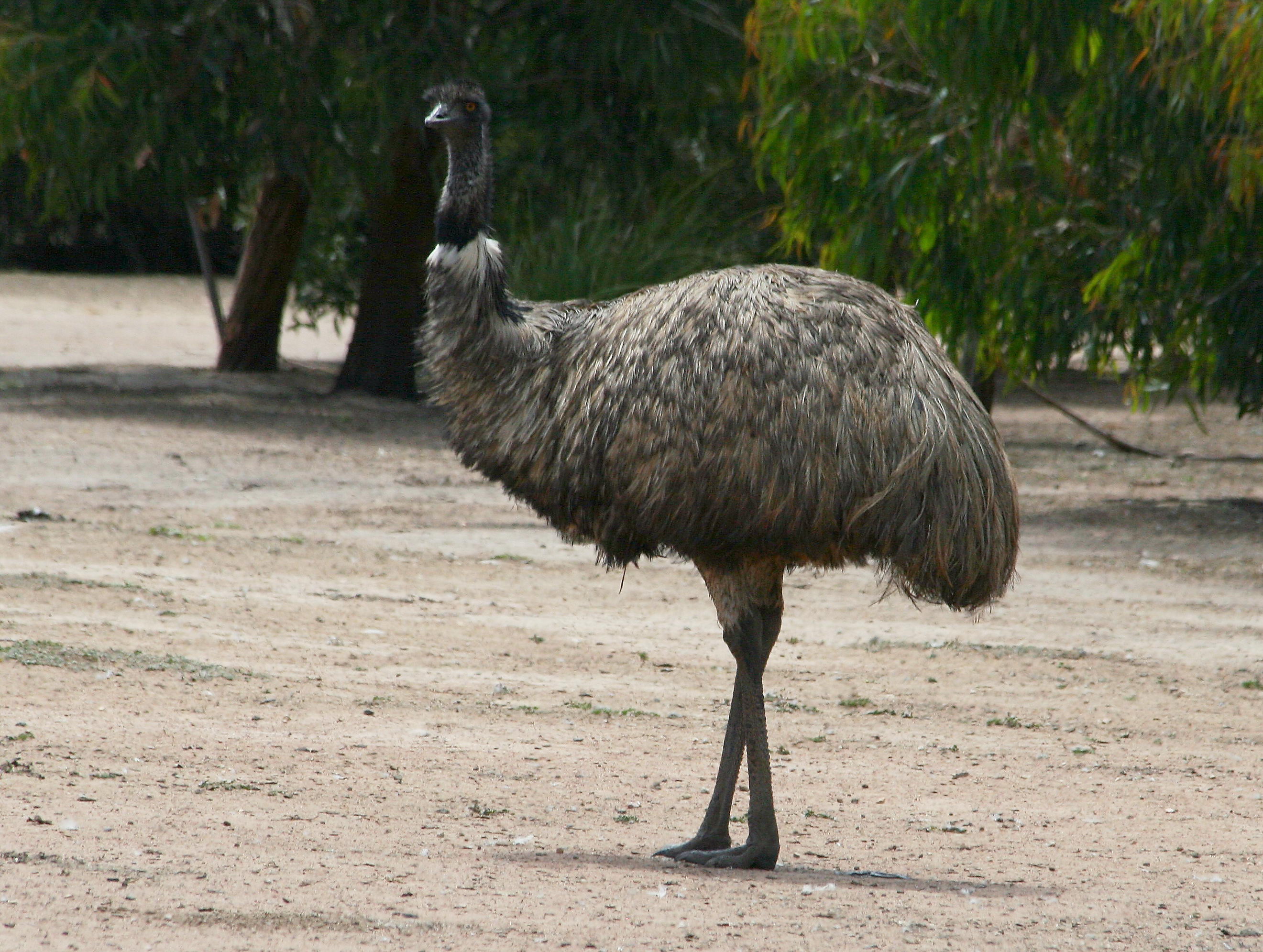We have lived in Australia for almost five years. Over the various road trips I have been on, I have enjoyed seeing a lot of native Australian birds. Below is my personal top ten list of native birds I have seen on these road trips and around my home. If you consider travelling in Australia, be sure to look out for these birds!
Note on conversions: Since I have lived outside of the United States for so long, all of the distances and weights in this article are given in the metric system. If you live in the US, you can use this conversion to get an idea of these quantities:
1 centimeter(cm) ~ 0.4 inches(1in = 2.54cm)
1 meter(m) ~ 3.3 feet
1 kilometer(km) ~ 0.62 miles(1mi ~ 1.6km)
1 gram(g) ~ 0.035 ounces(1oz ~ 28g)
1 kilogram(kg) ~ 2.2 pounds
Like the Mallee fowl and other Megapodes, male brush turkeys make nests composed of leaf litter, which they rake up using their feet from a large patch of ground. These nests are built under tree shelter and can be a mound up to 1m high and 4m wide. I have seen the building of these nests disturb human habitation when the nest was built in a backyard, the turkeys rake trails of leaf litter across a road or public pathway, or they rake away all of the mulch in a garden. Each male brush-turkey typically has several mates, which lay eggs in its mound. The turkeys check the temperatures using their beaks and rake layers on or off whether the nest is too hot or too cold. A brush-turkey nest can have up to 50 eggs in it. After the chicks hatch, they receive no further parental care.
Description: Australian brushturkeys are not easily confused with any other Australian bird. They are about the size of their relatives, peafowl and junglefowl, and they have a laterally flattened tail. They are mostly black, but they have a red coloured head with no feathers, while females usually have a yellow band around their neck and males have a yellow wattle.
How to find: If you stay in the area for a few days, you would be lucky not to see one! Most of them live close to human habitation and they are common in backyards and on rooftops, but mostly in parks.
Diet: Brush-turkeys dig in the ground for insects, seeds and fruits. To get to insects they break open rotting logs with their feet.
Australian pelicans are a common sight on lakes and rivers where there is not too much human disturbance. They are pretty large birds(medium-sized for pelicans) and have a wingspan of about 2.5m. They usually weigh 4.5-7.5 kilograms. Despite their size, pelicans can fly pretty well(Although they do look kind of awkward when they fly). They can be seen anywhere along the coast.
Lake Eyre is a large salt flat in South Australia which has a watershed spanning a large part of the outback. Once every few years, lake Eyre fills with water. During this time, many species of birds, including pelicans, fly there from all around Australia to gather at the edge and breed. During one of these periods, from 1989-1990, there was an estimated number of 200,000 pelicans, or 80% of Australia's total population. The fact that they can sense the filling of lake Eyre from the coast, in some places thousands of kilometers away, is still a mystery.
Description: Pelicans are mostly white, although the wings are mostly black. Males are larger than females. The Australian pelican holds a world record with the largest bill of any bird, which can be 40-50cm long, longer in males than in females. The pelicans also have a yellow rim around the eyes, making the eyes appear bigger.
How to find: Most pelicans eat fish from the sea or brackish water, so you are likely to see them around docks, harbours or jetties. They scavenge food from humans sometimes, so they often roost near human activity, usually in high places like on lamps and tall poles. They can also be seen flying overhead.
Diet: Pelicans mainly eat fish, which they catch while swimming with their long bills.
Note on conversions: Since I have lived outside of the United States for so long, all of the distances and weights in this article are given in the metric system. If you live in the US, you can use this conversion to get an idea of these quantities:
1 centimeter(cm) ~ 0.4 inches(1in = 2.54cm)
1 meter(m) ~ 3.3 feet
1 kilometer(km) ~ 0.62 miles(1mi ~ 1.6km)
1 gram(g) ~ 0.035 ounces(1oz ~ 28g)
1 kilogram(kg) ~ 2.2 pounds
10: Australian Brushturkey
Alectura lathami
The Australian brushturkey, frequently called the bush turkey or scrub turkey, is very common across the entire east coast, from Melbourne to Carins. They are commonly seen in backyards in this region and can become a pest in some areas, since they steal food(usually fruit) often.Like the Mallee fowl and other Megapodes, male brush turkeys make nests composed of leaf litter, which they rake up using their feet from a large patch of ground. These nests are built under tree shelter and can be a mound up to 1m high and 4m wide. I have seen the building of these nests disturb human habitation when the nest was built in a backyard, the turkeys rake trails of leaf litter across a road or public pathway, or they rake away all of the mulch in a garden. Each male brush-turkey typically has several mates, which lay eggs in its mound. The turkeys check the temperatures using their beaks and rake layers on or off whether the nest is too hot or too cold. A brush-turkey nest can have up to 50 eggs in it. After the chicks hatch, they receive no further parental care.
 |
| Male brushturkey |
Description: Australian brushturkeys are not easily confused with any other Australian bird. They are about the size of their relatives, peafowl and junglefowl, and they have a laterally flattened tail. They are mostly black, but they have a red coloured head with no feathers, while females usually have a yellow band around their neck and males have a yellow wattle.
How to find: If you stay in the area for a few days, you would be lucky not to see one! Most of them live close to human habitation and they are common in backyards and on rooftops, but mostly in parks.
Diet: Brush-turkeys dig in the ground for insects, seeds and fruits. To get to insects they break open rotting logs with their feet.
9: Australian Pelican
Pelecanus conspicillatus |
| Australian pelican swimming |
Australian pelicans are a common sight on lakes and rivers where there is not too much human disturbance. They are pretty large birds(medium-sized for pelicans) and have a wingspan of about 2.5m. They usually weigh 4.5-7.5 kilograms. Despite their size, pelicans can fly pretty well(Although they do look kind of awkward when they fly). They can be seen anywhere along the coast.
Lake Eyre is a large salt flat in South Australia which has a watershed spanning a large part of the outback. Once every few years, lake Eyre fills with water. During this time, many species of birds, including pelicans, fly there from all around Australia to gather at the edge and breed. During one of these periods, from 1989-1990, there was an estimated number of 200,000 pelicans, or 80% of Australia's total population. The fact that they can sense the filling of lake Eyre from the coast, in some places thousands of kilometers away, is still a mystery.
Description: Pelicans are mostly white, although the wings are mostly black. Males are larger than females. The Australian pelican holds a world record with the largest bill of any bird, which can be 40-50cm long, longer in males than in females. The pelicans also have a yellow rim around the eyes, making the eyes appear bigger.
How to find: Most pelicans eat fish from the sea or brackish water, so you are likely to see them around docks, harbours or jetties. They scavenge food from humans sometimes, so they often roost near human activity, usually in high places like on lamps and tall poles. They can also be seen flying overhead.
Diet: Pelicans mainly eat fish, which they catch while swimming with their long bills.
8: Laughing Kookaburra
Dacelo novaeguineae
The Laughing Kookaburra is closely related to the Blue-winged kookaburra, which lives in northern Australia and New Guinea. Laughing kookaburras are known by the popular song, although many people might not know what they are. Kookaburras are in fact a member of the Kingfisher family, and they have heads and beaks suitable for catching fish and other small prey. Most of them, however, do not live near lakes or rivers. They are mostly found around Sydney, but some live in other parts of the East coast.
The most distinctive thing about laughing kookaburras is their call. They use it to warn other kookaburras of danger or as a territorial call to stop other families of kookaburras or other birds from intruding on that family's territory. It starts with one kookaburra, which initialises the call, then continues when others join in as a group. It sounds like laughing or chuckling.
Description: Laughing kookaburras are mostly white, with dark brown on the wings, and the tail is barred with black. They have a brown horizontal eye-stripe, and the upper beak is blue, while the lower part of the beak is white. They also have bright blue spots on their wings.
How to find: Kookaburras are almost always found in trees, on branches that are straight and horizontal, preferring eucalyptus trees. They can be seen in public parks around picnic benches, because they occasionally steal food from humans, but not very often. They can be very brave sometimes and come up to people to beg for food.
Diet: Insects, small lizards and snakes, also fish when present. When they are hunting, they sit very still on a branch, and when they see movement on the ground, they dive down and make their catch, which is interesting to observe.
The most distinctive thing about laughing kookaburras is their call. They use it to warn other kookaburras of danger or as a territorial call to stop other families of kookaburras or other birds from intruding on that family's territory. It starts with one kookaburra, which initialises the call, then continues when others join in as a group. It sounds like laughing or chuckling.
Description: Laughing kookaburras are mostly white, with dark brown on the wings, and the tail is barred with black. They have a brown horizontal eye-stripe, and the upper beak is blue, while the lower part of the beak is white. They also have bright blue spots on their wings.
How to find: Kookaburras are almost always found in trees, on branches that are straight and horizontal, preferring eucalyptus trees. They can be seen in public parks around picnic benches, because they occasionally steal food from humans, but not very often. They can be very brave sometimes and come up to people to beg for food.
Diet: Insects, small lizards and snakes, also fish when present. When they are hunting, they sit very still on a branch, and when they see movement on the ground, they dive down and make their catch, which is interesting to observe.
7: Tawny Frogmouth
Podargus strigoides
Because
of their nocturnal habits, low call, silent flight, diet, and similar
colouring, tawny frogmouths are very easily mistaken for owls, although
they are more closely related to nightjars than to owls. Tawny
frogmouths can be seen anywhere in Australia, even in Tasmania, except
for dense rainforests and the outback, and they are very common along
the East coast, around Sydney and Brisbane.
Tawny
frogmouths sleep during the day, and they need to be safe from
predators during this time, so their colours make them able to
camouflage. They sleep on tree branches, and their feathers make them
able to blend into their surroundings so well, that they are even hard
to see in broad daylight. When they are sleeping, tawny frogmouths tilt
their head upwards to help this disguise. Even while awake, they hardly
move at all, so they might appear to be fake. They sometimes sleep in
pairs.
Description:
Tawny frogmouths have a mottled pattern that allows them to camouflage,
with black, light brown, darker brown, and silver-grey. They have a
very big head and a wide beak. During the night, they make a deep,
continuous 'ooo-ooo' sound.
How
to find: Sometimes, tawny frogmouths can be seen sleeping on a railing
during the day. When they do this, you can come close up to them, but it
is best to be very quiet, to avoid waking them up. Their call can be
heard during the night.
Diet:
Tawny frogmouths are carnivores, and they eat mainly worms and insects.
They are considered one of the best Australian pest control birds, as
they hunt a large variety of the animals usually classified as household
pests. Unlike owls, they catch their prey with their beaks instead of
their feet.
6: Emu
Dromaius novaehollandiae
The emu is a very large, flightless bird. It is the largest living bird by height apart from its relative, the ostrich, and they have a height that can reach up to 1.9 meters. I have seen emus run very fast, and they can run up to 50 kph(30mph). Emus live almost everywhere in the Australian outback, and also in a few other places, like the Flinders ranges, where they are very common.
The Emu is a major icon of Australia, appearing on the coat of arms and playing a large role in aboriginal mythology. Many aboriginal groups have a 'constellation' in the shape of an emu, made from the dark parts in the Milky Way. This 'constellation' stretches across the Southern Cross and Scorpius, and is only visible in a clear night sky.
Like the brushturkey(above), the male emu does all of the work in caring for the eggs. The male also cares for the chicks. In the Flinders Ranges, I have seen a male emu with eleven chicks, which it was very protective of, rearing up towards the car while the chicks were crossing the road. The only work the female does is laying the eggs.
Description: Emus are very tall, in many cases taller than a person. They are covered with thin, shaggy brown feathers, except for the feet, head and neck. The head and neck have a pattern of black and bright blue and a thin layer of feathers. Emu chicks are brown with white stripes.
How to find: Emus can be seen anywhere in the outback, and sometimes groups walk straight through small towns. They are very easy to find on a drive through the Flinders Ranges or anywhere in the outback.
Diet: Emus are herbivores, and they eat from a large variety of plants, eating fruits, seeds, and small insects, and they swallow small stones to help them digest their food. Living in the outback, they can go several days without water if necessary.
This is the end of part 1. I will post part 2 sometime in the next three weeks, but not sooner than two, because I will be taking a trip to the Netherlands. In the meanwhile, I would like some suggestions of some birds that I can add to my list for part 2, especially birds common in Western Australia, where I have not travelled.




